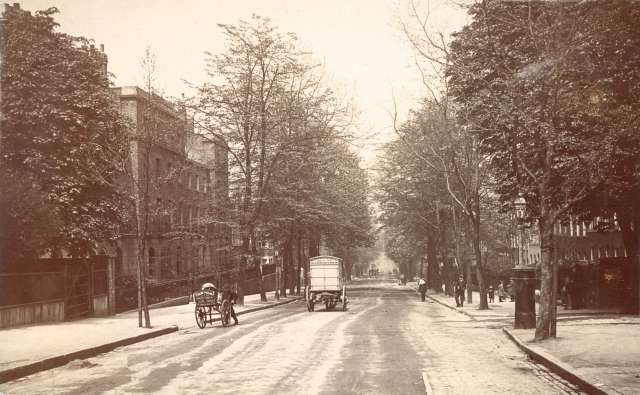Camberwell Grove Traffic History
Back in 2014 we made a presentation to Camberwell Community Council (see full text here ) We highlighted the problems:
High traffic volumes,
Illegal speeding and ineffective speed control on the long straight hill,
No safe crossing places for the many small children going to local primary schools and nurseries
No ramps to help the elderly or disabled down kerbs
Damage to the bridge as heavy goods vehicles ignore the weight limit and also queue on the bridge as they struggle through the narrow lane
Traffic lights, introduced to keep high volumes of traffic moving over the bridge, resulted in queues of idling vehicles increasing air pollution. Gridlock on the bridge caused road rage.
Where the carriageway is too narrow for two-way traffic to pass, wider vehicles must mount the pavement.
Vehicles dominate over pedestrians and cyclists; residents are affected by constant noise.
The list goes on!
When we walked the road with Councillors and Highways Officers they all agreed that improvements were needed. Since then no improvements have been made. The bridge over the railway line was temporarily shut in October 2016 when an inspection discovered that heavy vehicles ignoring the weight ban had dangerously damaged the supporting girders. This was a repeat of the closure in 2007.
In October 2017 Network Rail, along with Southwark Council, is repairing the bridge to a standard which makes it safe for trains. The load bearing capacity of the carriageway above the bridge will be reduced from 7.5t to 3t and the traffic lane width from 2.2m to 2m to minimise costs. Southwark Council has not decided whether to reopen the bridge to motor traffic.
Camberwell Grove
Camberwell Grove is home to a mixed community of around 1,000 people. Despite being a narrow residential road, it had become a busy and dangerous north-south route for traffic trying for example, to get between Brixton and Peckham avoiding Camberwell Green and Denmark Hill. The railway bridge was closed to motor traffic in October 2016 to repair the damage caused by overweight goods vehicles repeatedly using the bridge.
Uphill of the bridge the carriageway is narrow and gridlocked at busy times or when a car cannot pass a wide van or lorry. Lorries and cyclists often mount the pavement to get by. This is illegal and dangerous particularly when the road is busiest and children are walking to primary schools and nurseries in the area.
The junction with McNeil Road at the bridge is dangerous. The traffic lights installed when the bridge was reopened in 2008 encouraged cars and vans to drive at speed to get through, and the pedestrian crossing phase was not long enough - only 5 seconds. The crossing is dangerous for people with young children or pushing prams, and for anyone who cannot run across the road, whether through age, infirmity, or simply because they are carrying heavy bags.
In addition, for those crossing McNeil Road there is no view of the traffic lights and no traffic free phase. Pedestrians cannot see which direction the traffic is coming from. This is a big problem for people who cannot move quickly. Motor traffic should not have priority.
Pedestrians crossing the Grove are hidden by parked cars and have no easy view of motor traffic and cyclists. They must then sprint across the road. The lack of pedestrian crossing points is as unsafe for drivers and cyclists as it is for pedestrians. Downhill of the bridge the road gets even faster and wider making crossing hazardous.
Crossing is a particular problem for:
children going alone or being taken to Lyndhurst and Dog Kennel Hill Schools and Camberwell Grove Nursery
pedestrians crossing the road, for example, to and from Stories Road, Canning Cross, Mary Boast Walk, the path to St Giles churchyard where the road is wider and the traffic speeds down the hill. The junction with Camberwell Church Street is very wide with no central refuge. This is particularly dangerous for less mobile people.
high numbers of pedestrians going to Denmark Hill station and bus stops along with hospitals, local shops, workplaces and facilities.
Motor traffic dominates.
